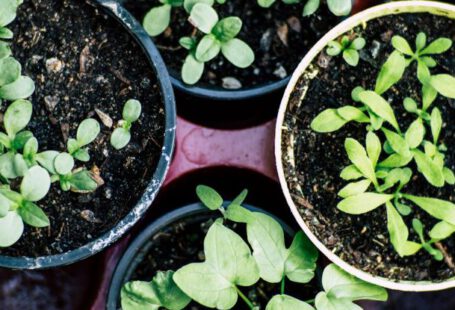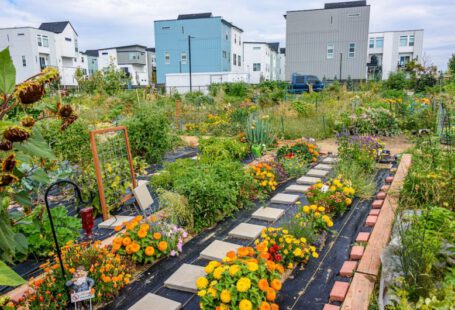Planting a successful garden starts with understanding the quality of the soil you are working with. Testing the soil before planting is crucial to ensure that your plants have the necessary nutrients to thrive. By assessing the soil quality, you can make informed decisions about what types of plants will grow best in your garden and what amendments, if any, are needed to optimize plant growth. In this article, we will explore various methods to test soil quality before planting to set yourself up for a bountiful harvest.
Understanding the Importance of Soil Testing
Soil testing is an essential step in gardening that allows you to determine the pH level, nutrient content, and overall health of the soil. By analyzing the soil composition, you can identify deficiencies or excesses that may hinder plant growth. Additionally, soil testing can help you avoid over-fertilizing, which can harm plants and pollute the environment. Testing the soil can also save you time and money by guiding you in selecting the right plants and amendments for your garden.
Conducting a Soil Texture Test
One simple way to assess soil quality is by conducting a soil texture test. Soil texture refers to the relative proportions of sand, silt, and clay in the soil, which influence its drainage and nutrient-holding capacity. To perform a soil texture test, take a handful of moist soil and squeeze it in your hand. If the soil forms a tight ball that holds its shape, it likely has a high clay content. If the soil crumbles easily, it is sandy, while a soil that holds its shape but can be broken apart is loamy. Understanding your soil texture can help you choose suitable plants and adjust watering and fertilization practices accordingly.
Testing Soil pH
Soil pH is a measure of the acidity or alkalinity of the soil and plays a crucial role in nutrient availability to plants. Most plants prefer a slightly acidic to neutral pH range of 6.0 to 7.0. You can test soil pH using a simple pH testing kit available at garden centers or by sending a soil sample to a laboratory for analysis. Adjusting soil pH, if necessary, can be done by adding lime to raise pH or sulfur to lower it. Ensuring the correct pH level in your soil will promote healthy plant growth and maximize nutrient absorption.
Assessing Soil Nutrients
In addition to pH, it is important to test the nutrient levels in your soil to determine if any deficiencies exist. Common essential nutrients for plant growth include nitrogen, phosphorus, and potassium, as well as micronutrients like calcium, magnesium, and iron. Soil testing kits can provide information on nutrient levels, or you can send a soil sample to a professional lab for a detailed analysis. Based on the results, you can tailor your fertilizer application to meet the specific needs of your plants and avoid nutrient imbalances that can stunt growth or cause nutrient toxicity.
Observing Soil Drainage
Proper soil drainage is crucial for plant health as it affects root development and prevents waterlogging, which can lead to root rot. To assess soil drainage, dig a hole in the ground, fill it with water, and observe how quickly the water drains. Sandy soils drain quickly but may require more frequent watering, while clay soils drain slowly and hold water for longer periods. Ideally, loamy soils provide a balance of drainage and water retention. Understanding your soil’s drainage characteristics can help you choose plants that are suited to your garden’s specific conditions.
Interpreting the Results
Once you have gathered all the necessary information from your soil tests, it is essential to interpret the results accurately. Look for patterns and trends in the data to identify any issues that need to be addressed. Consider factors like soil texture, pH, and nutrient levels in conjunction with the types of plants you wish to grow. Based on the results, you can make informed decisions about soil amendments, fertilizer applications, and plant selection to create an optimal growing environment for your garden.
Taking Action Based on Soil Test Results
After analyzing the soil test results, it’s time to take action to improve soil quality and set the stage for successful planting. Depending on the findings, you may need to add organic matter, such as compost or manure, to improve soil structure and fertility. Adjusting pH levels with lime or sulfur and applying targeted fertilizers can address specific nutrient deficiencies. Planning your garden layout and plant selection based on soil characteristics will help you achieve better results and a healthier garden overall.
Prepping the Soil for Planting
With a clear understanding of your soil quality and the necessary adjustments in place, you are now ready to prepare the soil for planting. Start by tilling the soil to improve aeration and incorporate any amendments evenly. Consider adding a layer of mulch to help retain moisture and suppress weed growth. Remember to follow the planting recommendations for your chosen crops and monitor the soil throughout the growing season for any signs of nutrient deficiencies or imbalances.
In conclusion,
Testing soil quality before planting is a critical step in ensuring the success of your garden. By assessing soil texture, pH, nutrient levels, and drainage, you can make informed decisions about plant selection and soil amendments to create an optimal growing environment. Regular soil testing and observation will help you maintain healthy soil and achieve bountiful harvests year after year. Start by conducting simple soil tests and interpreting the results to set yourself up for a thriving garden that will reward your efforts with lush, vibrant plants and abundant produce.





